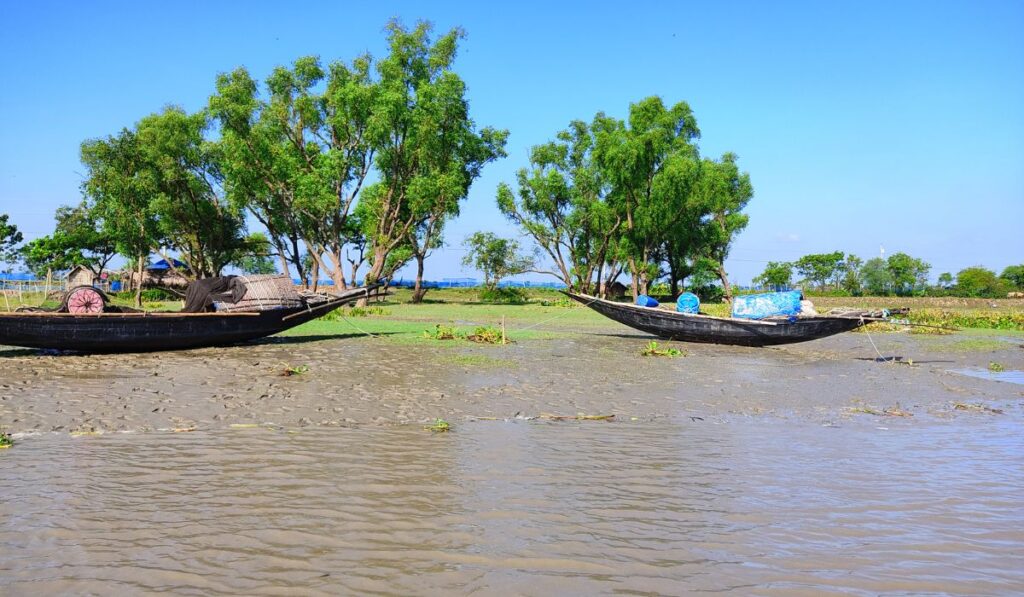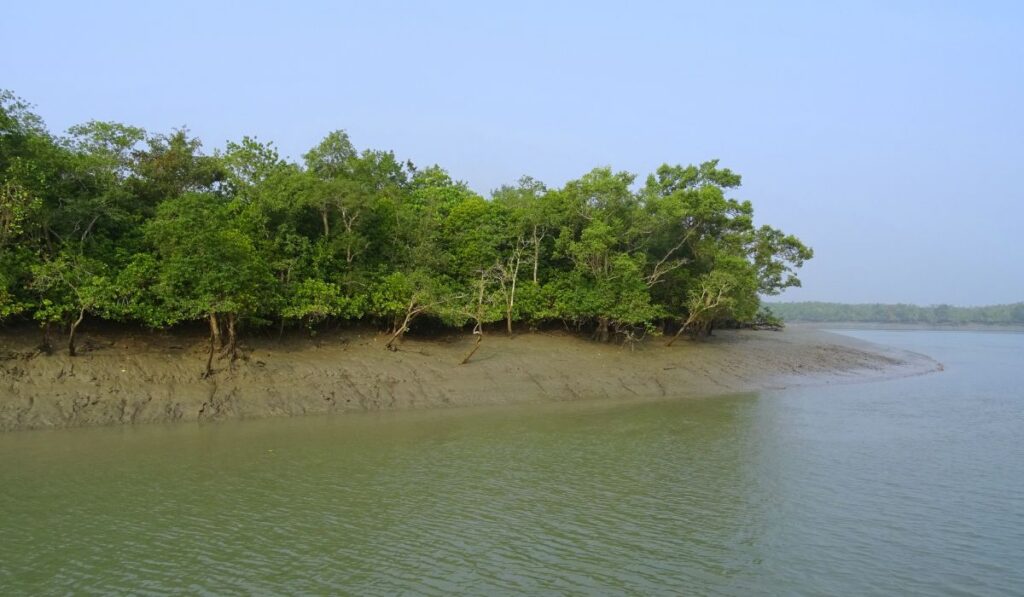
Exploring the Enchanting Sundarbans National Park: A UNESCO World Heritage Site
Welcome to the mesmerizing realm of the Sundarbans National Park – a captivating destination renowned for its unique biodiversity and natural wonders. Nestled at the confluence of the Ganges, Brahmaputra, and Meghna rivers, this magnificent wilderness spanning parts of India and Bangladesh beckons adventurers, nature enthusiasts, and wildlife lovers alike. As a UNESCO World Heritage Site and a renowned biosphere reserve, the Sundarbans holds immense ecological significance and offers a myriad of experiences that leave visitors awestruck. In this article, we embark on a comprehensive exploration of the Sundarbans National Park, delving into its remarkable features, rich biodiversity, and the importance of its conservation efforts.

Geographical Significance:
The Sundarbans National Park is located in the vast delta formed by the convergence of the Ganges and Brahmaputra rivers, and its sprawling territory encompasses parts of both India and Bangladesh. The park is renowned for its expansive mangrove forests, which thrive in the saline waters of the region. This unique ecosystem creates a natural buffer against tidal surges and cyclones, protecting the coastal areas from severe damage.
UNESCO World Heritage Site and Biosphere Reserve:
In recognition of its outstanding universal value, the Sundarbans National Park was designated as a UNESCO World Heritage Site in 1987. The park’s inclusion on this prestigious list underscores its global importance and the need for its preservation. Additionally, the Sundarbans has been designated as a biosphere reserve, serving as a living laboratory for scientific research, conservation, and sustainable development.
Biodiversity and Wildlife:
The Sundarbans is a treasure trove of biodiversity, harboring a remarkable array of flora and fauna. Its dense mangrove forests provide a sanctuary for numerous species, including the majestic Royal Bengal Tiger, for which the park is renowned. Other notable inhabitants include saltwater crocodiles, Gangetic dolphins, fishing cats, macaques, and a plethora of avian species. The Sundarbans is a bird lover’s paradise, with its wetlands attracting migratory birds from various parts of the world.
Ecological Importance and Conservation:
Beyond its natural beauty and wildlife, the Sundarbans plays a critical role in maintaining ecological balance. The mangrove ecosystem acts as a protective shield against coastal erosion, while also serving as a carbon sink, helping mitigate the effects of climate change. The conservation efforts in the Sundarbans focus on preserving its fragile ecosystems, mitigating human-wildlife conflicts, and promoting sustainable livelihoods for the local communities.

Exploring the Sundarbans:
Visiting the Sundarbans National Park offers a range of unforgettable experiences. Boat safaris through the meandering channels and creeks provide a glimpse into the heart of this untamed wilderness. The watchtowers strategically located within the park offer panoramic views and thrilling encounters with wildlife. Nature walks, birdwatching excursions, and cultural interactions with the local communities provide a holistic understanding of the Sundarbans’ charm.
Introduction to the Sundarbans National Park:
The Sundarbans National Park is a remarkable natural wonder located at the confluence of the Ganges, Brahmaputra, and Meghna rivers, spanning parts of India and Bangladesh. It covers an area of approximately 10,000 square kilometers (3,900 square miles) and holds immense ecological importance. Designated as a UNESCO World Heritage Site in 1987, the Sundarbans is renowned for its unique biodiversity and serves as a crucial biosphere reserve for scientific research and conservation efforts.
Unique Ecosystem and Geography:
The Sundarbans boasts the largest contiguous mangrove forest in the world, making it a truly unique ecosystem. The park is characterized by its intricate network of creeks, rivers, and tidal mudflats, which are shaped by the ebb and flow of tides. The ever-changing landscape of islands and water channels creates a dynamic environment that supports a wide range of flora and fauna.

Rich Biodiversity of the Sundarbans:
The Sundarbans is teeming with diverse plant and animal species. The dense mangrove forests are home to an array of plant life, including the iconic Sundari trees, which lend their name to the region. The park’s biodiversity is equally impressive in its wildlife. The Royal Bengal Tiger reigns as the apex predator, drawing visitors from around the world to catch a glimpse of this majestic creature. Other notable species include saltwater crocodiles, spotted deer, fishing cats, macaques, and an abundance of avian life, with over 300 species of birds recorded in the park.
Experiencing the Sundarbans through Ecotourism:
Ecotourism offers a unique opportunity to explore the Sundarbans National Park while preserving its delicate ecosystem. Boat safaris navigate through the park’s winding creeks, allowing visitors to witness its breathtaking landscapes and encounter wildlife in their natural habitat. Nature walks provide a closer look at the flora and fauna, while birdwatching excursions reveal the park’s avian wonders. It is crucial for visitors to adhere to responsible tourism practices, such as minimizing waste and respecting wildlife, to ensure the long-term conservation of the Sundarbans.

Conservation Efforts and Challenges:
The Sundarbans faces numerous environmental challenges that threaten its fragile ecosystem. Climate change, habitat loss, and human-wildlife conflicts pose significant risks to the park’s biodiversity. To address these issues, conservation initiatives have been implemented, focusing on sustainable practices, research, and community involvement. Efforts are underway to mitigate the impact of climate change, promote eco-friendly tourism, and develop strategies for peaceful coexistence between humans and wildlife.
Local Communities and Cultural Heritage:
The Sundarbans is not only a sanctuary for wildlife but also home to indigenous communities that have coexisted with nature for generations. These communities have deep-rooted cultural practices and traditions that are intricately linked to the mangrove ecosystem. Exploring the Sundarbans offers an opportunity to learn about their way of life, traditions, and sustainable practices that have helped maintain the delicate balance between humans and nature.

Visiting the Sundarbans National Park:
If you plan to visit the Sundarbans, it is essential to obtain the necessary entry permits and plan your visit during the appropriate time of the year. Local tour operators can assist with arranging transportation, accommodations, and guided tours to ensure a smooth and enjoyable experience. It is crucial to follow safety guidelines and precautions to minimize risks and contribute to the preservation of the Sundarbans.
Ensuring Safety in the Sundarbans:
While exploring the Sundarbans, it is important to prioritize safety. Visitors should avoid close encounters with wildlife, respect their natural habitat, and refrain from littering. Adhering to safety guidelines and precautions will help ensure a safe and responsible visit to the Sundarbans. Some key safety guidelines include:
- Follow the instructions of experienced guides and naturalists who are familiar with the park and its wildlife.
- Maintain a safe distance from animals, especially tigers and crocodiles, as they are wild and unpredictable.
- Avoid feeding or approaching any wildlife. Respect their space and observe them from a distance.
- Stay on designated paths and trails during nature walks to minimize disturbance to the ecosystem.
- Dress appropriately for the climate and terrain, wearing light and breathable clothing, sturdy footwear, and a hat for sun protection.
- Carry sufficient drinking water and insect repellent to stay hydrated and ward off mosquitoes and other insects.
- Dispose of waste responsibly and follow the park’s guidelines for proper waste management.
- Be mindful of the tides and follow the instructions of boat operators during safaris to ensure a safe and smooth journey.
- In case of any emergency or wildlife encounter, remain calm and seek assistance from your guide or park authorities.
By respecting the guidelines and prioritizing safety, visitors can enjoy a memorable and enriching experience while contributing to the preservation of the Sundarbans’ unique ecosystem.
FAQS
Can I spot Royal Bengal Tigers in the Sundarbans National Park?
Yes, the Sundarbans National Park is renowned for its population of Royal Bengal Tigers. While spotting tigers in their natural habitat is a thrilling experience, it is important to note that they are elusive creatures. Safaris and guided tours provide the best opportunity to catch a glimpse of these majestic animals. However, it’s essential to remember that wildlife sightings cannot be guaranteed, as tigers are wild and roam freely in the vast park.
Are there any restrictions on visiting the Sundarbans during specific seasons?
Yes, there are certain restrictions on visiting the Sundarbans during specific seasons. The park is closed to visitors during the monsoon season, which typically lasts from June to September. This is due to heavy rainfall, strong currents, and the increased risk of cyclones in the region. The best time to visit the Sundarbans is from October to March when the weather is pleasant, and wildlife sightings are more common.
How can I reach the Sundarbans National Park from nearby cities?
To reach the Sundarbans National Park, you can fly to either Kolkata in India or Dhaka in Bangladesh, as they are the nearest major cities. From Kolkata, you can travel to the park by road, covering a distance of approximately 100 kilometers (62 miles) to reach the entry points like Godkhali or Sonakhali. From Dhaka, you can reach the park by road and then take a boat from Khulna to access the Sundarbans.
What are some popular boat safari routes in the Sundarbans?
There are several popular boat safari routes in the Sundarbans National Park, offering different experiences and wildlife sightings. Some well-known routes include the Sundarbans Tiger Reserve, Sajnekhali Wildlife Sanctuary, Dobanki Watchtower, Sudhanyakhali Watchtower, and Netidhopani Watchtower. These routes are carefully designed to navigate through the park’s waterways and creeks, providing opportunities to explore diverse habitats and encounter wildlife.
Are there any accommodations available inside the Sundarbans National Park?
No, there are no accommodations available inside the core area of the Sundarbans National Park. However, there are various accommodations and eco-resorts available in the nearby towns and villages, such as Sundarbans Tiger Camp, Sundarbans Jungle Camp, and Sundarbans Mangrove Retreat. These accommodations offer comfortable lodging options and often organize guided tours and activities to explore the Sundarbans. It is advisable to make prior reservations for accommodations to ensure availability during your visit.
Conclusion:
The Sundarbans National Park stands as a testament to the incredible biodiversity and ecological significance found in the world’s largest contiguous mangrove forest. Its rich flora and fauna, including the iconic Royal Bengal Tiger, saltwater crocodiles, and diverse bird species, offer a captivating experience for nature enthusiasts and adventurers alike. Through responsible ecotourism practices and conservation efforts, we can ensure the preservation of this precious ecosystem for future generations to marvel at the wonders of the Sundarbans National Park.

